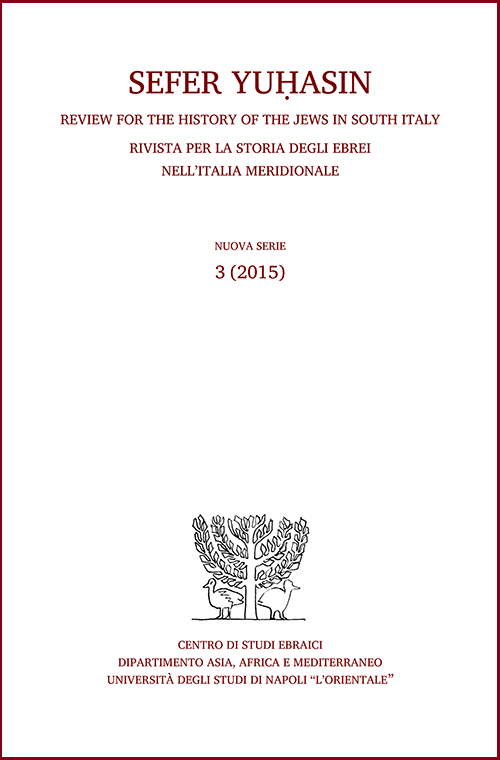Sul termine anbūrlāk nel Ms. Vat. Ebr. 411 in giudeo-arabo di Sicilia
Abstract
Oggetto dello studio è l’oscuro termine anbūrlāk presente in un componimento poetico in giudeo-arabo nel manoscritto Heb. 411 della Biblioteca Vaticana, pubblicato per la prima volta nel 1949 da E. Mainz, il quale attribuì il componimento a una variante giudeo-araba del Nord Africa. G. Wettinger argomentò in maniera convincente in alcuni suoi studi successivi che il dialetto dei versi è più vicino al maltese o al giudeo-arabo di Sicilia. Wettinger identificò inoltre correttamente il temine anbūrlāk con l’imborlachu presente in numerosi documenti notarili della Sicilia datati tra il XIV e il XVI secolo e identificato da H. Bresc con il “cielo del letto”. Nel presente lavoro si riportano a titolo illustrativo alcune ricorrenze del termine nelle fonti siciliane medievali e si ipotizza che il termine imborlachium possa essere basato sulla parola romanza borla 'fiocco'. Si avanza inoltre l’ipotesi che il termine possa aver indicato originariamente solo le guarnizioni e le nappe che decoravano le tende, e che in seguito il significato si sia esteso a tutto il baldacchino. Viene fornita una nuova lettura e traduzione del verso, e si pubblica per la prima volta una trascrizione integrale del componimento poetico giudeo-arabo in caratteri ebraici vocalizzati, così come presente nel manoscritto.
A Note on the Term anbūrlāk in the Vatican Ms. Ebr. 411 in Judeo-Arabic of Sicily
The obscure term anbūrlāk is found in a poem in Judeo-Arabic from the Vatican Ms. Heb. 411, first published in 1949 by E. Mainz, who related these poems to North African Judeo-Arabic dialects. G. Wettinger convincingly argued, in some later works, that the dialect of the poems was closer to Maltese or to the Judeo-Arabic of Sicily. He also correctly identified the term anbūrlāk with the imborlachu found in many notarial archive documents from Sicily, dating to the 14th-15th centuries and explained by H. Bresc as being the canopy of a bed. In the present work, some illustrative occurrences of the term in Medieval Sicilian sources are given, and it is conjectured that the term imborlachium could be based on the Romance word borla, ‘tassel’. The suggestion is therefore posited that the term may have originally indicated just the trimmings and tassels decorating the drapes, and only later on did the meaning extend to the whole canopy. A new reading and translation of the verse is provided, and a transcription of the entire Judeo-Arabic poem in Hebrew vocalized script, as found in the Ms., is published here for the first time.
Downloads
Gli autori che pubblicano su questa rivista accettano le seguenti condizioni:
- Gli autori mantengono i diritti sulla loro opera e cedono alla rivista il diritto di prima pubblicazione dell'opera, contemporaneamente licenziata sotto una Licenza Creative Commons - Attribuzione che permette ad altri di condividere l'opera indicando la paternità intellettuale e la prima pubblicazione su questa rivista.
- Gli autori possono aderire ad altri accordi di licenza non esclusiva per la distribuzione della versione dell'opera pubblicata (es. depositarla in un archivio istituzionale o pubblicarla in una monografia), a patto di indicare che la prima pubblicazione è avvenuta su questa rivista.
- Gli autori possono diffondere la loro opera online (es. in repository istituzionali o nel loro sito web) prima e durante il processo di submission, poiché può portare a scambi produttivi e aumentare le citazioni dell'opera pubblicata (Vedi The Effect of Open Access).

